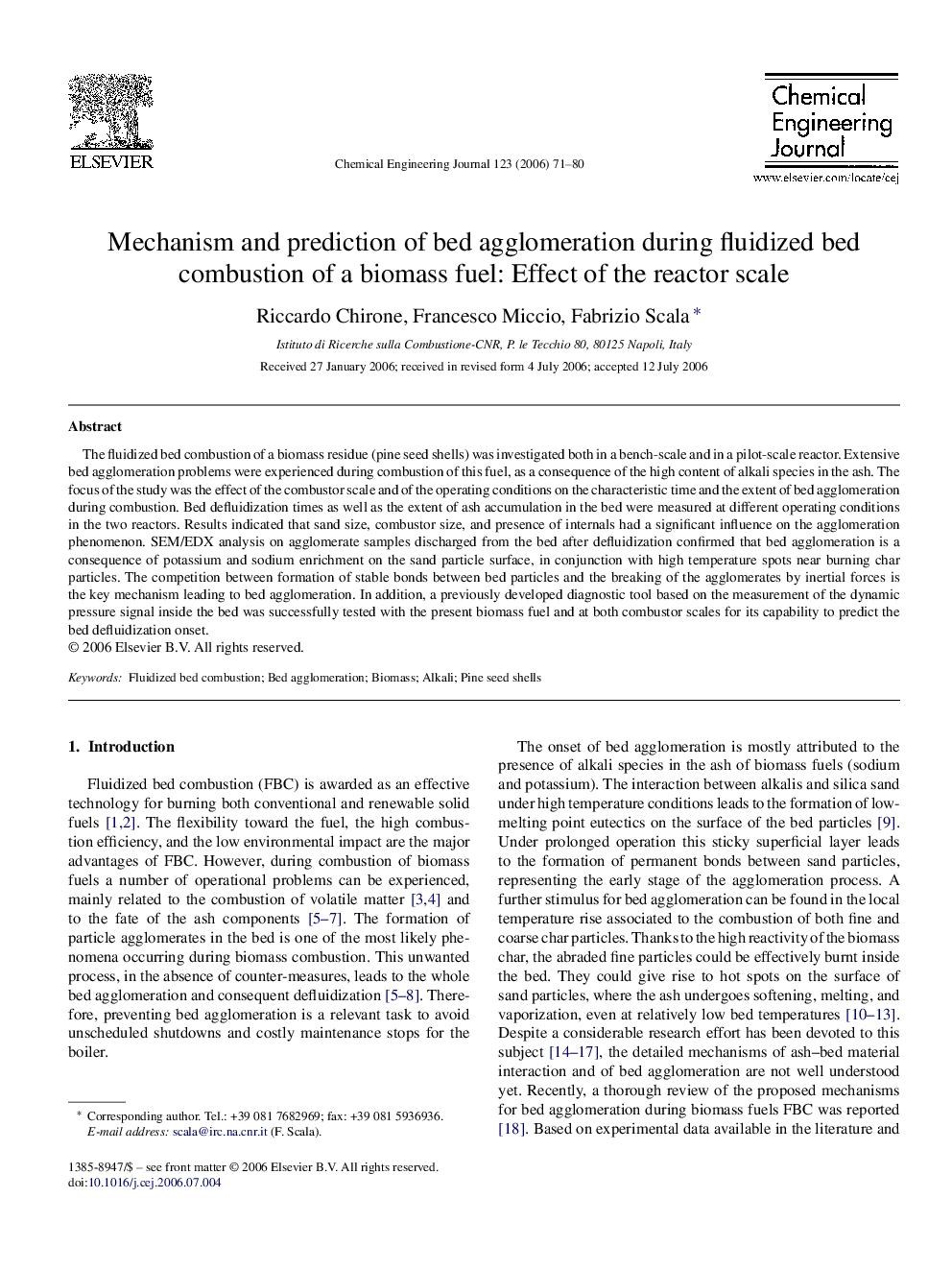| Article ID | Journal | Published Year | Pages | File Type |
|---|---|---|---|---|
| 154127 | Chemical Engineering Journal | 2006 | 10 Pages |
The fluidized bed combustion of a biomass residue (pine seed shells) was investigated both in a bench-scale and in a pilot-scale reactor. Extensive bed agglomeration problems were experienced during combustion of this fuel, as a consequence of the high content of alkali species in the ash. The focus of the study was the effect of the combustor scale and of the operating conditions on the characteristic time and the extent of bed agglomeration during combustion. Bed defluidization times as well as the extent of ash accumulation in the bed were measured at different operating conditions in the two reactors. Results indicated that sand size, combustor size, and presence of internals had a significant influence on the agglomeration phenomenon. SEM/EDX analysis on agglomerate samples discharged from the bed after defluidization confirmed that bed agglomeration is a consequence of potassium and sodium enrichment on the sand particle surface, in conjunction with high temperature spots near burning char particles. The competition between formation of stable bonds between bed particles and the breaking of the agglomerates by inertial forces is the key mechanism leading to bed agglomeration. In addition, a previously developed diagnostic tool based on the measurement of the dynamic pressure signal inside the bed was successfully tested with the present biomass fuel and at both combustor scales for its capability to predict the bed defluidization onset.
